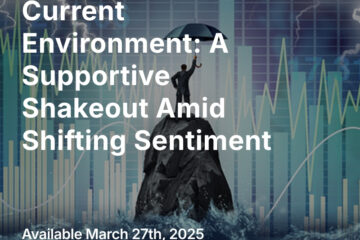Investors with eyes riveted on upcoming CPI data have had to make a few glances across the Atlantic to the financial (and perhaps soon-to-be-political) trainwreck in the UK. The wreck has centered on UK pension funds that had leveraged themselves in order to meet actuarial targets rendered impossible by a decade and more of ZIRP (zero-interest-rate policy).
The new Conservative government budget stoked fears of deficits and inflation for years to come — and the bond market’s reaction crashed the flagship UK bond with a violence usually reserved for emerging markets undergoing a coup. That left UK pension funds facing margin calls and insolvency — a true “Lehman moment.” There were several promises of “whatever it takes,” combined with perplexing avowed time limitations to the central bank’s temporary QE — most recently that it would not extend past tomorrow. We strongly suspect that the program will be extended… since in spite of those promises, long-maturity UK bonds went right back to crisis levels.

The whole process illustrates a point we have made several times in recent weeks. Yes, the U.S. Federal Reserve has a “dual mandate” for employment and price stability. On the most fundamental level, its policy is supposed to keep inflation in check — but not at the cost of suppressing economic activity to the point where it curtails employment. Right now, with inflation so high, persistent, and worrisome (as we have been warning you since the beginning of 2021), the talk is that the Fed has become a “single-mandate” institution, focused only on controlling inflation, and telegraphing its willingness to tolerate a recession if necessary.
We’d go a step further and identify a still deeper ultimate Fed mandate: financial system stability. In other words, it was only secondarily the U.S. labor market that was on the Fed’s mind in March and April of 2020. What was primarily on its mind was ensuring that there was not a catastrophic, cascading “accident” in some part of the global financial system. The major places where Fed officials look for those big, critical systemic risks are in credit and currency markets. “Dislocations” there are the kind of existential threat that motivates “do or die” action from central bankers — often with later, long-lasting problems that come in their wake, but said to be necessary in the moment to stop a collapse. That was why a critical part of the Fed’s “all or nothing” approach during the pandemic was the extension of essentially infinite swap lines to ensure dollar liquidity around the world.
That’s the kind of action being undertaken by the Bank of England. And the Bank of England is not alone. The relative value of the U.S. dollar, and U.S. interest rates, are absolutely critical variables for the functioning of the global financial and economic system. The speed at which these variables are changing is leading to second-order effects that are hard to predict, and potentially very disruptive. In Japan, policy is running against the trend of the rest of the world — and for several days, no trades in Japanese government bonds were executed, as the central bank now essentially owns the whole market. German bunds were pushed to new highs on the news that the European energy and financial crisis might induce Germany to acquiesce to joint European debt issuance.
It usually takes months for monetary policy transmission to percolate into the economy and the financial system. The Fed waited too long to tighten; it is now tightening, and simultaneously, almost all other central banks are tightening, and bond buyers are aware that interest rates are moving higher. They are demanding higher interest rates because the rate of inflation is higher than the government officials in many countries want you to believe.
As a result, it is highly likely that something, somewhere, will break in the world bond or banking system. It could happen in one major country or in several countries. Such a break would necessitate a Fed pivot. The first hint of that came in the extension of a $3.1 billion swap line to the Swiss National Bank to cover an emergency dollar shortfall. That amount is small potatoes — nevertheless, it may be a sign of more to come.
The long and the short of it is that although the Fed might be serious about being willing to tolerate recession in the U.S. as collateral damage from its inflation-fighting program, it is extremely unlikely to tolerate global financial contagion from an “accident” that occurs in some significant global market as a result of its tightening regime. U.S. unemployment would have to get pretty bad to evoke a pivot. A “Lehman moment” at home or abroad that threatened global financial stability could evoke a pivot much more quickly.
In our view, the dislocations that are now occurring, or that seem to be emerging risks, are par for the course in a large shift that is underway. Pandemic fiscal and monetary policy marked a crescendo (and maybe a finale) of the low-inflation, low-interest-rate, abundant-liquidity regime that characterized the world after the Dot Com bubble and crash — and what is happening now is a turn in that cycle.
Today’s U.S. inflation print showed once again how persistent and entrenched inflation has become as the “lowflation” era retreats into the rear-view mirror. Gasoline prices cooled a little, and the overall CPI ticked down to 8.2% year-on-year from 8.3% in August. But many other items in the basket accelerated, including food, which rose at an annualized 9.6% in September. The “core CPI,” meant to strip out volatile items, at 6.6%, registered a 40-year high. (Of course, we remind readers to be alert for our periodic reports on the Guild Basic Needs Index, our in-house real-world inflation gauge, which gives what we think is a more neutral and realistic view of the inflation experienced by actual consumers on the ground.)
The bond market is once again returning to its role as a chastener of governments — voting a resounding “No” on the UK’s ambitions for a Thatcherism redo but with 21st-century leverage and debt. The UK is a now a poster-child for the bond market’s response when fiscal and monetary policies pull in opposite directions; and let’s just say that they are not the only economy where that kind of incoherence is a problem — the U.S. is in the same boat, as are many others.
It isn’t just expansionary fiscal policy driving inflation. Demographic shifts were accelerated by the pandemic, and prompted the more rapid departure of Boomers from the workforce — giving a structural tailwind to wage inflation (and probably to automation as well).

Source: Bank of America Research
Decades of extreme, idealistic environmental policy and political pressure have caused drastic resource under-investment — creating structural tailwinds for the prices of many materials and other tangible goods, especially reliable energy. The war in Ukraine and the geopolitical impasse between Europe and Russia is providing echoes of the energy turbulence of the 1970s.

Source: Bank of America Research
Indeed, the current environment echoes the 1970s in many ways, for example:
- inflation;
- the deployment of rapidly rising interest rates to combat it;
- domestic political turmoil;
- currency regime changes; and
- geopolitical fears (now reaching the level of “mutually assured destruction” as both U.S., Ukrainian, and Russian leaders have mentioned the use of nuclear weapons in a way that is a little too casual for comfort).
These reflections lead us to consider the structure and sector weighting of the U.S. stock market in that era and today — and to inquire whether the current environment is more likely to favor the winners of that era, or the winners of the low-inflation, low-rate, infinite-liquidity regime that is now being transformed.

Source: Pacer ETFs
In short: we don’t know when a Fed pivot is coming, but it is unlikely to be driven by employment woes in the United States; the Fed’s credibility is too much on the line for that. It is more likely that a financial “accident” somewhere in the stressed global financial system will provoke a Fed pivot by appealing to its real mandate — supporting the stability of the global financial system.
Investment Implications
Certainly when the pivot occurs, many beaten-down leaders of the last cycle will rally strongly again. But in the longer term, the shape of the global geopolitical and financial environment continues to develop into something quite different from what we’ve seen over the past 30 years.
We’re looking more to scarcity, necessity, and tangibility. That means “atoms, rather than data bits, ideas, or financial engineering.” We’re also looking to the capacity for robust execution in a more liquidity-constrained environment. In plainer English, that means “companies that can succeed without infinite capital being thrown at things that won’t make real GAAP profits for decades.” We think these should be the hallmarks for investment selection and idea generation in the emerging investment era.
Capital spending is going to be the key need moving forward — capital spending to enhance the production of tangible goods that can’t be conjured up by a keystroke. The central affliction gripping the world now is an inflationary impulse created by a tidal wave of profligate fiscal expenditure. That tidal wave was released into a global economy where capital expenditure to allow the production of more critical resources had been hamstrung by decades of investment-crushing ZIRP and doctrinaire regulatory overreach. Remember Milton Friedman: inflation comes from “too much money chasing too few goods.” All the Fed hawkishness in the world can’t solve that problem in the long run: only capex can.
Thanks for listening; we welcome your calls and questions.



